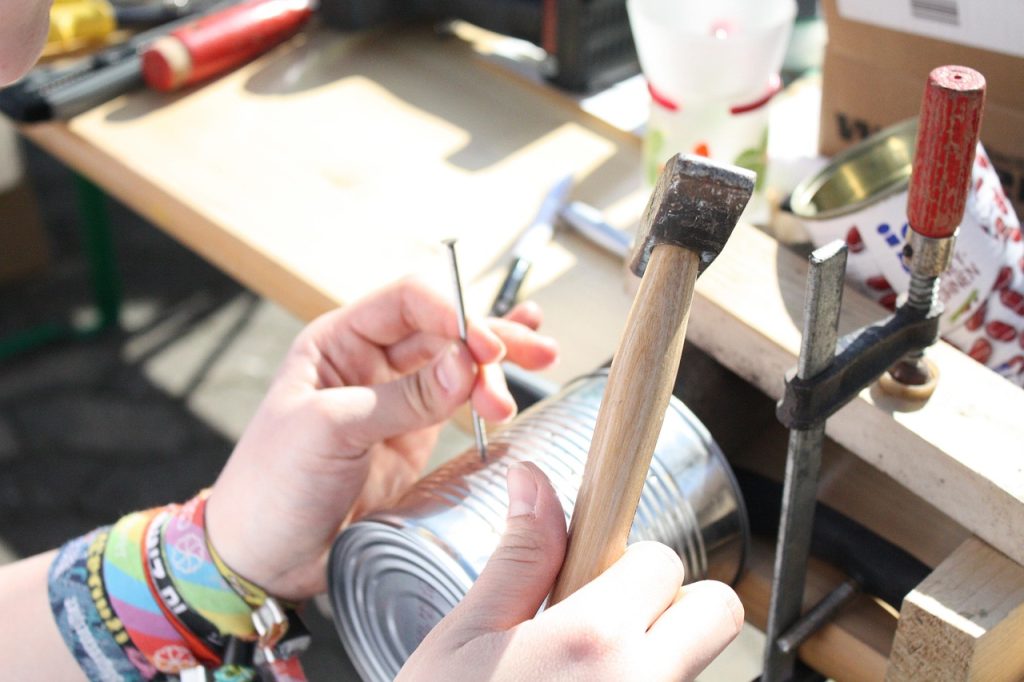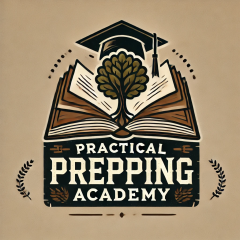
Prepping doesn’t have to mean emptying your wallet on high-end gear or stockpiling expensive supplies. With a little creativity and resourcefulness, you can build a solid preparedness plan without breaking the bank. The key is to focus on smart strategies, repurposing items, and investing in quality where it counts.
In this guide, we’ll explore practical, budget-friendly ways to prep, from repurposing everyday items to finding deals on used gear and building long-term sustainability. Let’s dive in!
1. Repurpose Everyday Items for Prepping
One of the easiest ways to save money is by repurposing items you already own. Here’s how to turn everyday objects into valuable prepping resources:
🫙 Glass Jars for Storage
Clean and reuse glass jars from pasta sauce, pickles, or other canned goods. They’re perfect for storing dry foods like grains, beans, and spices. Label them with contents and dates for easy organization.
👕 Old Clothing for Rags or Bandages
Don’t toss old t-shirts, towels, or blankets! Cut them into rags for cleaning or repurpose them as bandages, tourniquets, or makeshift clothing in emergencies.
🔗 Related Article: Building a Comprehensive First Aid Kit (FAK)
🪣 Buckets and Containers
Buckets from construction sites or old cans can be repurposed for organizing gear, collecting rainwater, or storing food. Just clean them thoroughly to remove any chemical residues.
🔗 Read Rainwater Harvesting Made Easy for simple water collection tips!
📦 Cardboard and Wood
Old cardboard boxes can be used for storage or even temporary shelters. Wood from pallets can be broken down for furniture, shelving, or firewood.
🔗 Check out The New Pallet Book for DIY ideas!
2. Adopt a Homesteader Mindset: Reuse and Repurpose
Homesteaders are masters of making the most of what they have. By adopting their mindset, you can save money, reduce waste, and build self-sufficiency.
🛠️ Fix, Don’t Replace
When something breaks, try repairing it instead of replacing it. Whether it’s mending clothing, patching boots, or fixing tools, this skill will save you money and prepare you for emergencies.
♻️ Shift to Reusable Items
Swap disposable items for reusable ones. Use cloth napkins, reusable shopping bags, and food containers to save money and reduce waste over time.
🎨 Get Creative with Upcycling
Turn old jeans into durable bags, broken chairs into shelves, or scrap wood into fire starters. Upcycling not only saves money but also sharpens your resourcefulness.
3. Buy Local and Used: Save Money and Support Your Community
Buying secondhand is a win-win: you save money and reduce waste. Here’s where to find budget-friendly prepping supplies:
🛒 Online Marketplaces
Check Craigslist, Facebook Marketplace, and OfferUp for used tools, camping gear, and survival equipment. You can often find high-quality items at a fraction of the cost.
🏪 Thrift Stores and Yard Sales
Thrift stores and yard sales are goldmines for prepping essentials like clothing, boots, medical supplies, and even non-perishable food. Don’t be afraid to haggle for a better deal!
🌾 Local Farmers’ Markets
Farmers’ markets aren’t just for fresh produce. Look for homemade soaps, candles, jams, and dried herbs—great additions to your prepping supplies.
💵 Discount Stores
Stores like Dollar Tree and Big Lots offer affordable prepper essentials like flashlights, batteries, canned goods, and first-aid supplies.
4. Buy Quality: Invest in Tools and Gear That Last
While it’s tempting to go for the cheapest option, investing in quality items will save you money in the long run.
🪓 High-Quality Tools
A durable axe, knife, or multi-tool is worth the investment. Research reputable brands and choose items that will last for years.
👢 Durable Clothing and Footwear
Invest in high-quality boots, jackets, and pants that can withstand harsh conditions. They may cost more upfront but will save you from frequent replacements.
🥫 Long-Term Food Storage
Opt for nutritious, long-lasting food storage options like freeze-dried meals. Brands like Mountain House offer affordable bulk options with shelf lives of 25+ years.
🔗 Related article: How to Create a 3-Month Emergency Food Supply
5. Focus on Sustainability: Grow Your Own and Stock Essentials
Prepping isn’t just about buying supplies—it’s about building self-sufficiency.
🌱 Grow Your Own Food
If you have space, start a garden or raise chickens for eggs. Growing your own food is cost-effective and ensures a fresh supply in emergencies.
🔗 Get The Backyard Homestead book from our Library!
🎣 Learn Survival Skills
Fishing, hunting, and foraging can supplement your food supply without costing much. Invest time in learning these skills to reduce reliance on store-bought items.
🔗 Related article: Foraging 101: How to Identify Edible Plants in the Wild
Final Thoughts
Prepping on a budget is all about being resourceful, intentional, and sustainable. By repurposing items, buying used, investing in quality, and building self-sufficiency, you can prepare for emergencies without draining your bank account.
Start small, think creatively, and remember: preparedness isn’t about having the most gear—it’s about having the right mindset and skills to thrive in any situation.
Join the Conversation
💬 What’s your favorite budget-friendly prepping tip? Have you repurposed items, scored deals at thrift stores, or found creative ways to save money while prepping? Share your ideas, experiences, or questions in the comments below—we’d love to hear from you! 👇
Navigation: 🏠 Home | 📚 Library | More 💸 Frugal & Budget Prepping



